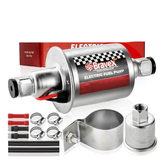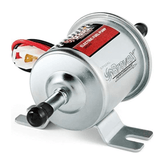How to Prep Walls for Painting: A Beginner’s Guide
Are you ready to take your wall painting to the next level? The secret lies in proper preparation. Whether you're aiming for a flawless finish, hiding imperfections, or ensuring paint adhesion, preparing your walls is the crucial first step. In this comprehensive guide, we will walk you through the step-by-step guide to prepping your walls for painting. From cleaning and repairing to sanding and priming, we'll cover all the tasks you need to complete before picking up a paintbrush.

What Tools Do You Need?
Before we get started, let's gather the necessary tools for the wall preparation process. You will need:
- Plastic sheets
- Painter's tape
- microfiber cloth or duster
- Sponge or soft cloth
- Soap
- Drywall saw, putty knife, utility knife
- Sanding block or sanding sponge
- Electric drywall sander with vacuum
- Paint roller or brush
How to Prep Walls for Painting?
Step 1. Clear and Protect the Space
Clear the space and protect your furniture and flooring before you begin preparing your walls. Start by removing any furniture, fixtures, or wall decorations from the room. This will give you ample room to work and prevent accidental damage.
Next, cover the floors and any remaining furniture with drop cloths or plastic sheets to protect them from dust, drips, and spills. Use painter's tape to secure the edges of the protective coverings and keep them in place throughout the painting process.
Step 2. Clean the Walls
Cleaning the walls is an important part of preparing a room for painting. To begin, use a microfiber cloth or a duster to remove any loose dirt or cobwebs from the walls.
Next, mix soap with warm water and use a sponge or soft cloth to wash the walls. Pay extra attention to grease, stains, or fingerprints areas, such as kitchen walls or high-traffic areas.
Rinse the walls thoroughly with clean water to remove any soap residue. Allow the walls to dry completely before proceeding to the next step. A sufficient drying time is required to prevent moisture from affecting the paint's adherence.

Step 3. Repair holes or cracks in drywall
Surface flaws must be repaired in order to achieve a smooth and flawless paint finish. Begin by inspecting the walls closely for any cracks, holes, or dents.
For small cracks or holes, apply spackling compound or joint compound with a putty knife. Fill the damaged area with the compound, ensuring it's level with the surrounding wall. Smooth out the surface by using the putty knife and removing any excess compound. Let the compound dry completely.
For medium-sized holes, follow a similar process as small holes. Use a putty knife to apply the compound and ensure a smooth finish.
For larger flaws or damaged drywall portions, you may need to take out the damaged area and replace it with a drywall patch. Use a drywall saw or utility knife to carefully cut around the damaged section, ensuring clean edges. Measure and cut a replacement piece of drywall to fit the hole precisely. Secure the patch in place using joint tape and joint compound. Smooth out the compound and let it dry completely.

Step 4. Sand the Walls
Sanding the walls is an important step in ensuring that the paint adheres to a smooth and level surface. While it can be a time-consuming process, the end result is worth it.
For small projects, you can start by using a sanding block or sanding sponge to manually sand the walls. Focus on rough textures, uneven surfaces, or previous layers of paint. Apply even pressure as you move the sanding block in a circular or back-and-forth motion. To avoid generating grooves or uneven regions, keep the sanding block moving at all times. As you sand, periodically rub your palm over the surface of the wall to check for smoothness.
For larger areas or extensive sanding, it’s highly recommended to use an electric drywall sander, such as the Bravex electric drywall sander with vacuum, to save you time and energy. With its powerful 800W motors, it delivers excellent sanding performance. Featuring 6 adjustable speeds (500-1800RPM), it meets all your different polishing needs. Additionally, the built-in vacuum suction system can absorb up to 99% of dust particles, allowing you to sand drywall without any dust. Moreover, the sander's patented 360° rotation design makes it easy to reach and sand dead angles, corners and edges. By using Bravex drywall sander, you can achieve outstanding results while saving time and work.
Step 5. Prime the Walls
Priming the walls is an important stage because it prepares the surface for paint, improves adherence, and assures a consistent finish. Choose a high-quality primer suitable for your walls and the type of paint you'll be using.
Stir the primer thoroughly to achieve an even consistency. Fill a paint tray with an appropriate amount of primer. Use a paint roller or brush to apply the primer evenly on the walls, beginning at the top and working your way down.
Apply a smooth and even coat, ensuring full coverage of the surface. Pay special care to corners, edges, and areas with repairs or patched drywall. Wait for the primer to dry completely before proceeding to paint. Proper drying time is critical for the primer to produce a suitable base and ensure optimal paint adherence.

FAQs:
1. Can I use any type of soap for cleaning the walls?
Use a mild soap mixed with warm water to clean the walls. Avoid using harsh chemicals that may damage the paint or wall surface.
2. Can I skip the wall prepping process and directly paint over the existing paint?
It is not recommended to skip the prepping process as it can result in a poor paint finish and reduced paint durability.
3. Is it necessary to sand the wall before painting?
Yes, it is generally necessary to sand the wall before painting, especially if the surface has imperfections, rough patches, or previous layers of paint. However, if you are painting over a clean, smooth, and properly prepared surface, such as newly installed drywall or a previously painted surface in good condition, extensive sanding may not be necessary.
4. How can I minimize the dust generated during drywall sanding?
Using a drywall sander with a built-in vacuum or a dust collection system can significantly reduce the amount of dust. Here are 2 effective methods for sanding drywall without dust.
Conclusion
Properly preparing your walls for painting is a crucial task to achieving a flawless and professional-looking finish. By following the step-by-step guide indicated above, you can guarantee that your walls are thoroughly cleaned, repaired, sanded, and primed before being painted.
Taking the time to properly prep your walls will not only enhance the aesthetics of your space but also contribute to the longevity of your paint job. So, before you start your next painting project, invest the effort in prepping your walls, and you'll be rewarded with outstanding results that will transform your space.








Leave a comment
Please note, comments need to be approved before they are published.